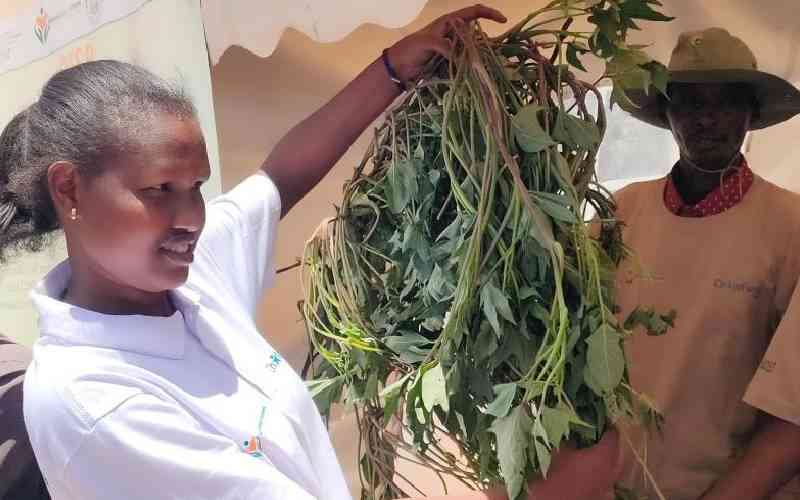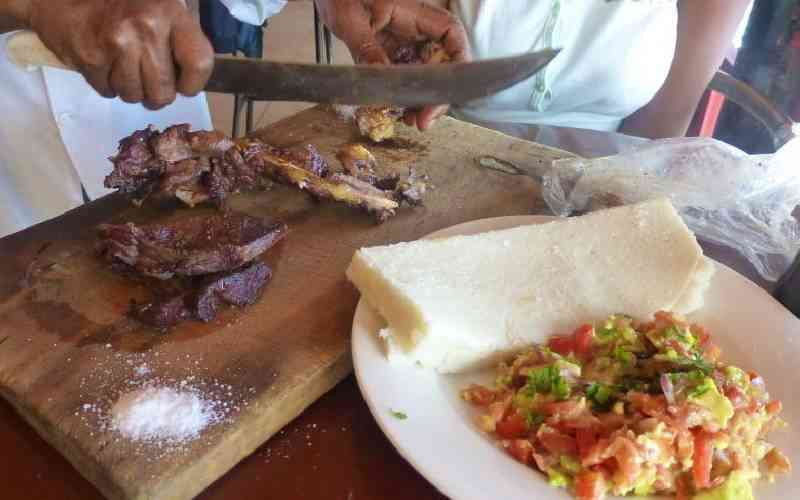
NAIROBI: According to latest Government statistics, over 10 million people in Kenya suffer chronic food insecurity and poor nutrition. Between two and four million require emergency food assistance.
Nearly 30 per cent of Kenya’s children are classified as undernourished; in some districts, a quarter of all children under 5 years are acutely malnourished; 26 per cent of the under 5 children are stunted, 11 per cent are underweight and 4 per cent are wasted. In school-going children, malnutrition leads to higher absenteeism due to illness, poor health, cognitive and psycho-motor underdevelopment and low physical capacity. Because of malnutrition, 9 out of 10 children from poor households fail to complete their basic education.
The issue of malnutrition is further compounded by the fact that most foods we consume lack micro-nutrients — vitamins and minerals — which, though required in small quantities, are essential for normal functioning of body systems.
The Government in collaboration with various NGOs, the private sector and professional bodies has implemented a number of strategies towards the management of malnutrition. They are aimed at increasing the quantity and quality of food available, making it accessible and affordable to all Kenyans..
The Government and NGOs are also undertaking food-based approaches for overcoming malnutrition and improving nutrition. They are also implementing a universal micro-nutrient supplementation programme for pregnant mothers and children under five years. The goal of these supplementation programmes is to promote adequate nutritional intake particularly among vulnerable groups.
The Government, through partnership with the food industry and NGOs, is implementing food fortification strategies which are designed to reduce the prevalence of micro-nutrient malnutrition. Foods that have been selected for fortification include maize, wheat and oil.
NGOs in collaboration with the Government are engaged in feeding programmes aimed at correcting malnutrition, preventing further deterioration of nutritional status as well preventing malnutrition in vulnerable groups.
These strategies have not been very successful in tackling malnutrition due to a number of challenges, among them: Government failure to allocate adequate funds; access to adequate health services; capacity building of implementers; co-ordination among key actors; family and community support; efficient M&E systems; awareness; and agricultural and health research directed at malnutrition that has been separated and isolated for many years.
For instance, the Government’s budgetary allocation for the health sector, for the 2014-15 financial year was only Sh47.4 billion, constituting 4 per cent of the national budget, compared to 3.4 per cent for 2013-14 financial year, which still falls far below the 15 per cent standard stipulated in the Abuja declaration. This compares poorly with countries such as Tanzania, Rwanda and Botswana with over 15 per cent health financing.
The human resource gap for nutritionists and dieticians within public health facilities and at community level is another critical challenge that needs immediate action. According to the Kenya Nutrition and Dieticians Institute, there are 1290 nutritionists in the country; 600 in public health facilities. This translates to one nutritionist for every 31,000 people.
Kenya has numerous nutrition stakeholders including Government ministries, United Nations (UN) agencies, donors, private and public teaching and research institutions, nutrition working groups and professional associations, and the private sector. Last month, some of these stakeholders joined hands and formed the Alliance for the Promotion of Good Breakfast whose main objective is to raise awareness on the importance of breakfast and the use of locally available foods that different communities access, to make a nutritious breakfast.
However, there is need to co-ordinate nutrition programmes by the different players to effectively tackle malnutrition in the country.
 The Standard Group Plc is a
multi-media organization with investments in media platforms spanning newspaper
print operations, television, radio broadcasting, digital and online services. The
Standard Group is recognized as a leading multi-media house in Kenya with a key
influence in matters of national and international interest.
The Standard Group Plc is a
multi-media organization with investments in media platforms spanning newspaper
print operations, television, radio broadcasting, digital and online services. The
Standard Group is recognized as a leading multi-media house in Kenya with a key
influence in matters of national and international interest.
 The Standard Group Plc is a
multi-media organization with investments in media platforms spanning newspaper
print operations, television, radio broadcasting, digital and online services. The
Standard Group is recognized as a leading multi-media house in Kenya with a key
influence in matters of national and international interest.
The Standard Group Plc is a
multi-media organization with investments in media platforms spanning newspaper
print operations, television, radio broadcasting, digital and online services. The
Standard Group is recognized as a leading multi-media house in Kenya with a key
influence in matters of national and international interest.









